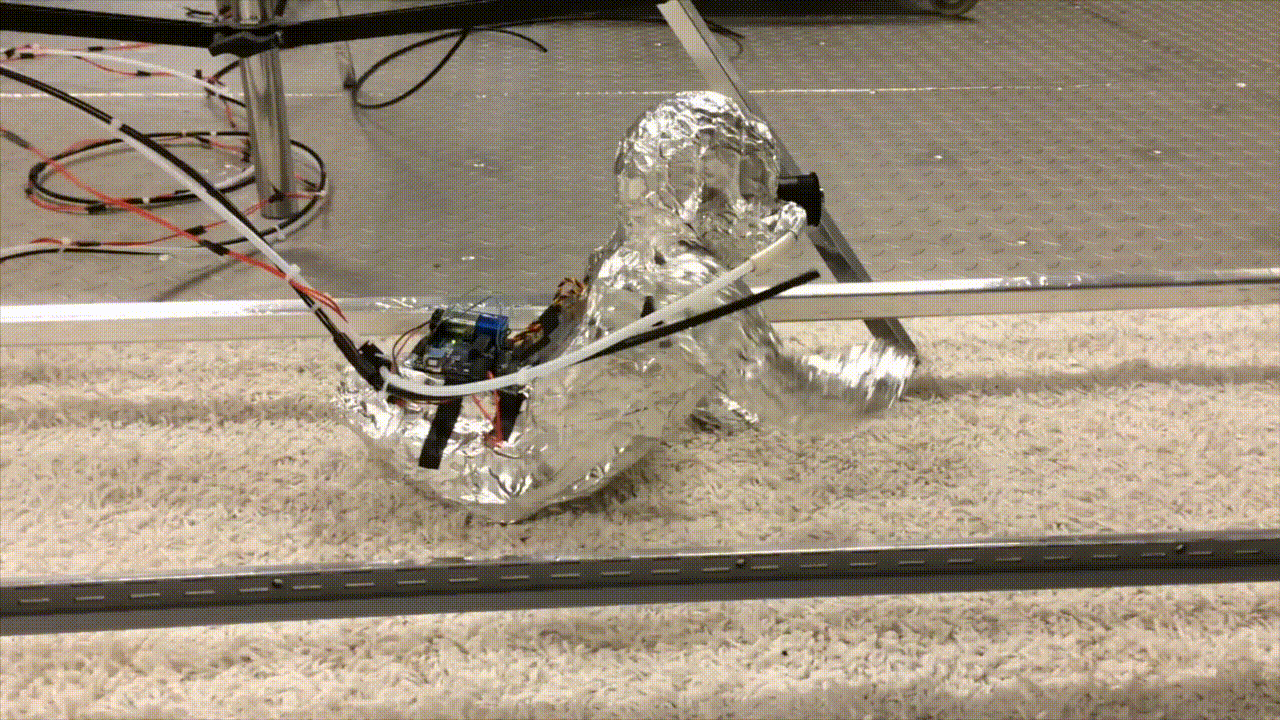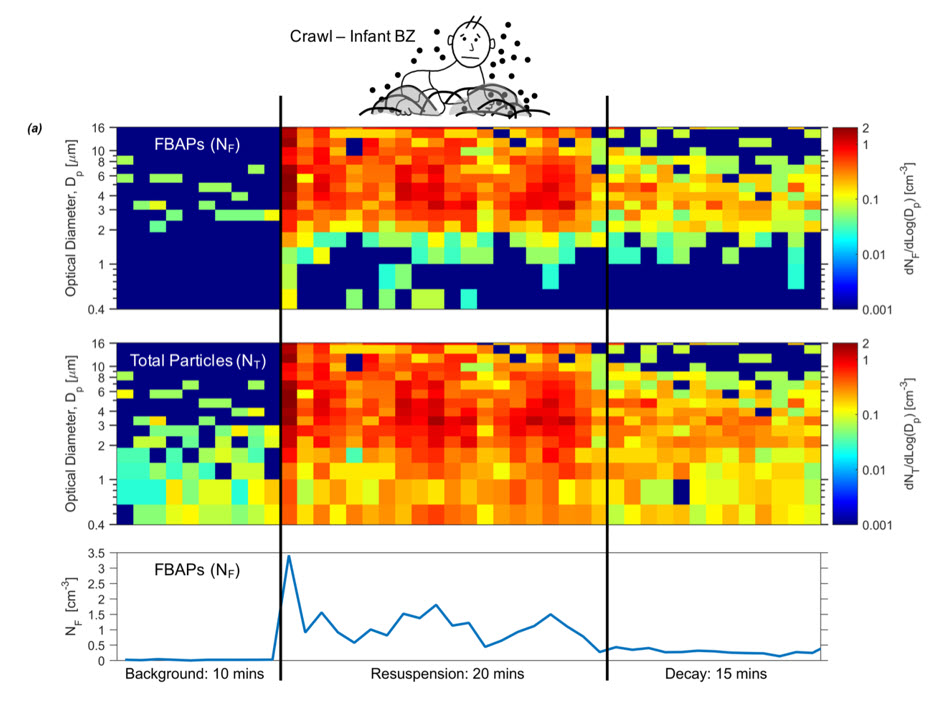Creepy, crawly robot baby shows just how much bio-gunk babies inhale
Researchers at Purdue University designed a crawling robot baby to determine how much dirt, bacteria, pollen and fungal spores babies inhale as they move through their indoor, carpeted environments. The robot looks more like a legless, tinfoil-encased baby cyclops than an adorable toddler, but the design worked well. It showed that babies inhale this concoction of bio-gunk at a relative rate of four times what an adult would inhale (per kilogram of body mass) walking along the same carpeted surface.
Newsweek reported on the study findings, saying, “It may sound unsanitary, but there might be some benefit to their teeny bodies gathering the microscopic bits left behind on the floor.”
The robot
The study was designed to compare the amount and composition of inhaled particles when both adults and babies traverse the same span of carpeted floor. For the adults, this meant donning a complete clean suit with a filtration mask and walking across the various carpets. But to determine this for babies, this meant designing a custom robot.
The robot was designed to simulate the movements a baby makes while crawling. Both the unique movements and the proximity of the baby’s face to the floor contribute to the volume of inhaled particles. Babies are notorious mouth breathers, so the robot had a filter affixed to the front of its face to inhale particles as a crawling baby would.
But why was the robot baby wrapped in Aluminum foil? The robot was covered with grounded aluminum tape to reduce the accumulation of electrostatic surface charge. The researchers didn’t want the dirt to stick to the baby. So, the robot wasn’t an actual dirt magnet. It was also wiped with isopropyl alcohol after each experiment.
The study
The researchers measured and analyzed the particulates in the breathing zone. The study, published in Environmental Science & Technology, was a joint effort between from Purdue University and a team of researchers from Finland. To “see” the particles that were kicked up by walking or crawling across the carpet samples, the team illuminated the dust particles with lasers.
“Most bacterial cells, fungal spores, and pollen particles are fluorescent, so they can be reliably distinguished from non-biological material in the air,” lead researcher Brandon Boor, assistant professor of civil engineering and environmental & ecological engineering at Purdue University says. “We also worked with a microbiology group at Finland’s National Institute for Health and Welfare, which conducted DNA-based analysis of the microbes we collected onto filters.”
The study used a laser-induced florescence-based aerosol instrument, BioScout, and an optical particle sizer (OPS) to capture data on the size and distribution of particles in the air around the robot and human study participants. The lasers cause the biological material to fluoresce and the instruments tracked the biological particles in the air near the robot in real-time. All BioScout and OPS data were processed and analyzed with custom-written scripts in MATLAB. The results are shown below for both the adults and the robot baby.

(b) Adult walking. MATLAB time-series plots of FBAP number size distributions (upper), total particle number size distributions (middle), and size-integrated FBAP number concentrations (NF, lower). Image Credit: Purdue University
The color map plots show how the biological particle resuspension and exposures change over time. They also show the peak concentration of fluorescent biological aerosol particles (FBAPs) is much higher for the robot baby than for the adult.
Potential benefits of the bio-gunk
Yes, babies kick up a lot of dust and gunk as they crawl, and they’re perfectly positioned to inhale much of it. Not only do they inhale more particles, but a higher percentage of the particles makes it past nature’s filters and into their lungs.
“For an adult, a significant portion of the biological particles are removed in the upper respiratory system, in the nostrils and throat. But for very young children, they more often breathe through their mouths, and a significant fraction is deposited in the lower airways—the tracheobronchial and pulmonary regions. The particles make it to the deepest regions of their lungs.”
That actually could be a good thing.
Forbes states, “Exposure to microbes and various substances at an early age (assuming that the baby has a normal developing immune system) can actually help train the baby’s immune system”
Boor adds, “There are studies that have shown that being exposed to a high diversity and concentration of biological materials may reduce the prevalence of asthma and allergies later in life.”












评论
要发表评论,请点击 此处 登录到您的 MathWorks 帐户或创建一个新帐户。